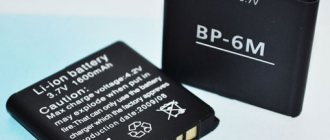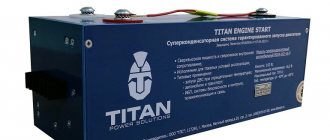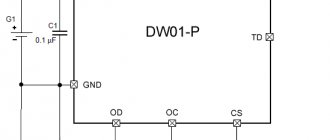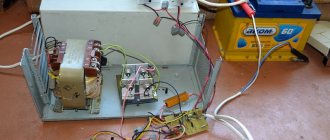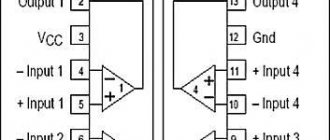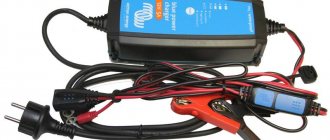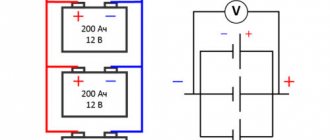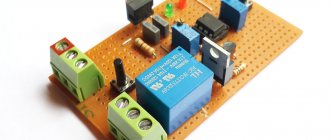What is battery memory effect
The battery memory effect is a significant loss of battery capacity as a result of recharging a battery that has not fully discharged. The product seems to remember the previous capacity value at which it was set for recharging and during subsequent operation it delivers electric current only up to this level.
This process can be explained not by the appearance of cognitive abilities in an inanimate object, but as a result of an increase in the crystals of the active substance.
This “pathology” is most pronounced if some types of rechargeable batteries are installed for recharging until the available supply of electric current is fully discharged. If the battery is constantly used in this mode, the product will not only lose a significant amount of capacity, but may also completely fail.
To protect yourself from the need to replace batteries, you need to notice changes in the operation of such products in a timely manner. In general, the “symptoms” of different models manifest themselves almost identically, so it will not be difficult to timely determine the operation of the power source in a non-standard mode.
Despite the limited number of operating cycles of such devices, even severely damaged batteries, in many cases, can be restored with the help of special battery training.
Battery refurbishment
The battery memory effect is reversible. If its manifestations were immediately noticed, then a single complete cycle of charge and discharge can help:
- To discharge, you need to connect a load to the battery, the current through which is rated for this type of device.
- Charge the battery with the rated current until the voltage rises to the required level.
- Continue charging until the case temperature begins to rise.
- Immediately disconnect the battery from the charger.
Prolonged use of faulty batteries leads to the need to perform several successive training cycles of operation and charging.
Important! Increased self-discharge of long-term used batteries cannot be restored.
How does the memory effect manifest in batteries?
In order to eliminate the possibility of battery memory formation, it is recommended to first correctly determine the type of battery. Knowing the chemical composition of the electrolyte and electrodes, it is easy to determine the susceptibility of such elements to the effect of crystal growth.
Ni-Mh. Almost all batteries that contain nickel are subject to the memory effect. Ni-Mh batteries are no exception to this rule.
It is enough not to completely discharge the battery once, so that the next time you use it, the capacity of the element will be significantly reduced. If a gadget or tool is used frequently, this effect may manifest itself in a noticeable decrease in the operating time of the device.
Ni-Cd. Nickel-cadmium products are the most susceptible batteries to memory effect. A decrease in capacity also manifests itself in the form of a decrease in operating time. This feature can manifest itself even with a short period of operation of the elements, especially in cheap models.
Li-Ion. Lithium-ion batteries are modern chemical sources of electricity and therefore have virtually no memory effect. Minor deviations in capacity, as a rule, are associated only with long-term operation of such products or with very intensive use
Li-Pol. Lithium polymer products also lack memory effect. Such products are ideal for devices that are used occasionally and are recharged long before the power is completely used up.
LiFePO4. Lithium iron phosphate cells are subject to a memory effect. Despite the fact that the decrease in capacity as a result of setting the product to recharge until completely discharged is not as significant as in Ni-Mh and Ni-Cd batteries, it is enough to violate the principle of complete energy consumption once to start a pathological process on the cathode of batteries of this type.
What is the memory effect of an electric battery?
This concept refers to the reversible loss of battery capacity, which is present in some types of storage devices when the established charging mode is violated. Specifically, we are talking about recharging a battery that is not completely exhausted.
The battery memory effect is the phenomenon of a decrease in the initial capacity of an electronic storage device due to the user’s violation of the operating mode recommended by the developers. This destructive process was so named because of its practical manifestation: the power source seems to remember the fact that last time it was not completely discharged, that its full capacity was not used, and therefore, in subsequent times the device will produce less amount of energy compared to the time when its rated capacity could provide more.
Some common types of batteries are predisposed to the effect discussed in the topic: lithium-ion (Li-ion), lithium-polymer (Li-Pol), nickel-metal hydride (Ni-Mh), nickel-cadmium (Ni-Cd), as well as lithium iron phosphate (LiFePO4).
Li-ion Electronic storage devices of this type are manufactured using modern technologies, therefore they are practically devoid of the memory effect. By itself, it is of course present, but its influence on the overall capacity is so insignificant that it is simply neglected. If minor drops in capacity do occur, then, as a rule, they are associated only with prolonged use of lithium-ion electronic storage devices or with their extremely intensive use.
Li-Pol. Lithium polymer products can also please users with the absence of a memory effect. Li-Pol electric storage devices perform best when installed on devices that are used periodically and are recharged long before the energy runs out.
Ni-Mh. Almost all electrical components that contain nickel are subject to the memory effect. It is enough not to bring the electric battery to full discharge once, so that during subsequent use its capacity will significantly decrease. If a device equipped with Ni-Mh is used regularly, the memory effect can manifest itself in a significant reduction in the duration of the gadget’s operation.
Ni-Cd. This variety is most susceptible to the memorization effect. A drop in capacity is also expressed in a reduction in the operating time of the device, and the effect can be felt even with short-term use, and especially for low-cost models.
LiFePO4. Holders of lithium iron phosphate are also unlucky, because they too suffer from the memory effect. Once LiFePO4 is not completely discharged, a pathological process starts at the cathode.
There are some nuances in this matter. So, at an early stage, the effect is reversible, and in Li-ion varieties, it manifests itself to a slight extent. A simple conclusion follows from all this: if you happen to encounter a similar phenomenon, you don’t need to immediately fall into a panic mood.
How to prevent the memory effect
It is very easy to prevent the memory effect in batteries most susceptible to such pathologies. To do this, it is enough to always discharge the battery to 100% before installing an electrical source for recharging.
If for one reason or another it is not possible to fully consume electricity every time, then for prevention it is recommended to completely use up the reserve from time to time, and then fully charge the product with the current recommended by the battery manufacturer.
To reduce the likelihood of memory effect formation in nickel-cadmium and nickel-metal hydride batteries, it is recommended to “boost” them to the required capacity before using new products. For this purpose, it is enough to fully charge the product with a current that does not exceed the values set by the manufacturer.
Then discharge the device through a not very powerful consumer of electricity. Such training will allow you to fully unlock the potential of the device from the very beginning of operation and remove the initial formation of crystals on the internal contacts of the battery.
IMAX B6 Smart Charger
How to remove battery memory effect?
The capacity or some part of the capacity is restored due to periodic “training” of the battery. To do this, completely discharge your phone and then charge it 100%. For nickel-cadmium batteries (NiCd) this procedure is recommended to be done once a month, for nickel-metal hydride batteries - once every two months.
The number of calibrations depends on the degree of neglect of the memory effect. The procedure may have to be repeated several times, which will eventually restore a certain amount of the battery's original capacity.
It was previously recommended to carry out 3-4 similar calibrations in a row with any new battery. A special inhibitor was installed in the batteries, which must be destroyed in order to achieve the maximum capacity. A few full discharges and charges of a new battery will effectively deal with this. For modern phones this information is irrelevant.
Although lithium-ion and lithium-polymer batteries do not have a memory effect, they are also recommended to be calibrated. For lithium-based batteries, perform training every few months to slow down the loss of capacity.
Which devices are most susceptible to the problem?
The memory effect is especially strong in portable devices that can be used for long periods of time. For example, screwdrivers used in non-electrified objects are charged to full capacity, even if the electricity supply is not used up.
This is due, first of all, to the fact that during the work process it will not be possible to install the device for recharging. A similar problem occurs if the wireless device is used periodically.
Workers, when there are breaks in using the device, connect it to the network via an adapter, which leads to a very rapid decrease in the efficiency of the power supply.
Is it possible to boost the battery when capacity decreases?
With a decrease in the capacity of Ni-Mh - Ni-Cd, it is possible to restore this parameter to a significant extent. The procedure for eliminating the memory effect is carried out in the following sequence:
- Discharge the battery through a not-too-powerful consumer of electricity until a voltage of 0.8 - 1.0 Volts is present at the contacts of the product. This indicator can be measured using a multimeter.
- Place the battery in the charger and charge it to 100 percent.
- Repeat the charge-discharge process several times.
If the memory effect is the consequences of an “underdischarge” that was observed for a long time, then the charging process may need to be carried out using more powerful chargers.
If during the operation of batteries the memory effect does not clearly appear or the products are stored for a long time without recharging, then the training described above is recommended for preventive purposes. This approach works especially well when using Ni-Mh and Ni-Cd batteries.
Still have questions or have something to add? Then write to us about it in the comments, this will make the material more complete and accurate.
Prevention of memory effect
In the early stages, this phenomenon is reversible, and in Li-ion batteries the memory effect practically does not appear. Therefore, lithium batteries can and should be charged without waiting for the charge level to drop to a minimum. When using batteries with a pronounced memory effect, it is recommended to discharge the battery to the minimum recommended by the manufacturer before each recharge. But at the same time, it is impossible to allow the elements to be deeply discharged - below the permissible level.
It is recommended to train new batteries with a pronounced memory effect before using them. It consists of discharging and charging batteries 2-3 times in a row. This training helps to increase the battery capacity to the maximum possible value. To eliminate the manifestations of the memory effect during battery operation, you need about 10 cycles of such training. In the future, for recharging, it is recommended to use chargers with an additional discharge function. They first discharge the battery and then charge it.
